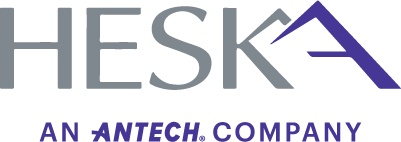A Technician’s Role in Ultrasound
This isn’t news to anyone – the shortage of credentialed veterinary technicians has reached a critical level, and one would be hard pressed to find a veterinary hospital nationwide that is not in (desperate) need of additional technical staff.
A variety of reasons could explain this, but burnout, inadequate wages relative to the cost of living, and an underutilization of their abilities could be listed among them. While there is no magical panacea to the perils that veterinary technicians face in the current environment, there is a solution that can come close: diagnostic ultrasound.
In human medicine, ultrasound is becoming an integral part of the physical exam, and veterinary medicine is not far behind. As a reflection of this, veterinary and veterinary technician colleges are rapidly incorporating ultrasound in some form into their curriculum. This is a direct result of the incredibly powerful diagnostic capabilities of the modality, and its ability to positively impact patient care on a daily basis. While we can’t make direct parallels between human and veterinary medicine, there is another principle on “the other side” that we could potentially mirror through the utilization of trained technical staff to perform diagnostic ultrasounds. These studies could then be interpreted by a board certified veterinary radiologist, as only a DVM is permitted by law to interpret images and formulate a diagnosis. On that note, we must be careful not to minimize the skillset required to acquire diagnostic ultrasound images. After all, human ultrasound technicians must undergo a rigorous typically two-year graduate program including a plethora of hands-on scanning training alongside a skilled sonographer before they are sent out on their own. To counter that, the human curriculum includes several study types that are not typically routinely performed in the veterinary setting, namely obstetric, vascular, and musculoskeletal imaging, although the latter is starting to become more utilized.
Back to the premise of this discussion, having credentialed technicians perform diagnostic ultrasound exams is an excellent way for veterinary practices to better utilize their skillset and knowledge. In turn, this has the potential to generate significant new revenues for the practice while justifying an equivalent increase in salary, alongside an increased sense of value and appreciation amongst the veterinary team. Further, utilizing technicians to perform ultrasound exams frees up the team of veterinarians to do procedures and treatments that only a veterinarian is permitted to do. This, too, has a net positive effect on practice revenues and patient care. It is important to note that if a clinic is considering adding ultrasound capabilities to their practice, it requires a monetary and personal investment on part of both the practice owner and the proposed sonographer, whether that is a veterinarian or veterinary technician.
This starts with the practice investing in good quality equipment, such that the sonographer has the tools required to navigate the learning curve and obtain high-quality diagnostic images. Of equal importance is the dedication of both the practice and the sonographer to allocate the time and dedication required to become proficient at the art of ultrasonography, including attending online training, wet labs, in-clinic training, and in-clinic practice daily, where possible, to expedite the learning curve. Remember, though, that Rome wasn’t built in a day. Developing a skillset with ultrasound can be equated to building a house. You don’t lay down hardwood flooring and install cabinetry before the foundation is built, and the house is framed. There is a logical process that can be taken while navigating the learning curve that ensures you are set up for success, and that the ultrasound is being utilized and generating a return on investment as soon as it is brought into the practice. Speak to your local Heska account manager to get more information on the high quality ultrasound equipment that we have to offer, along with the extensive nationwide ultrasound courses offered through our Vet Academy!
Read our follow up article: Ultrasound and RVTs – Getting Started

